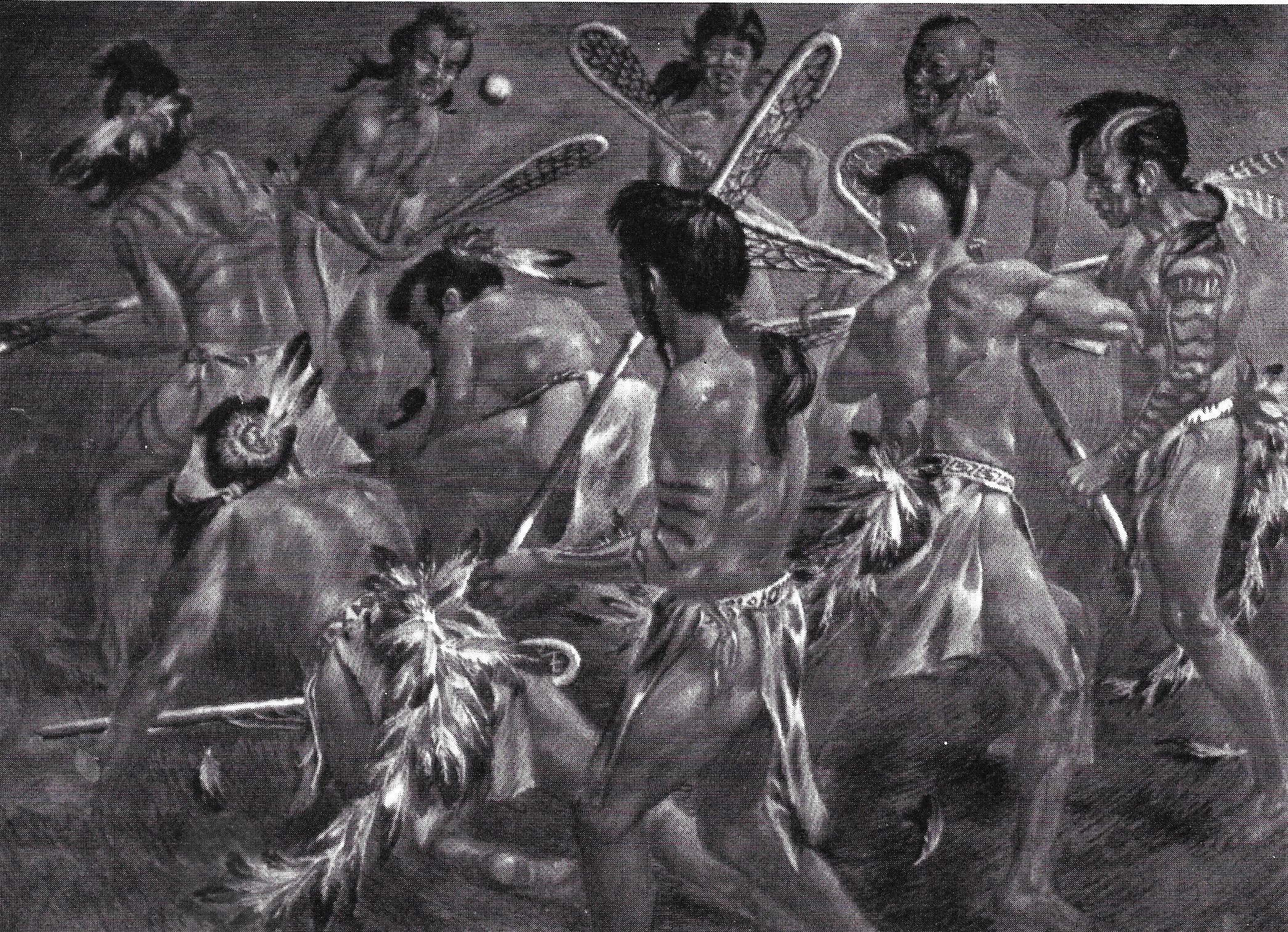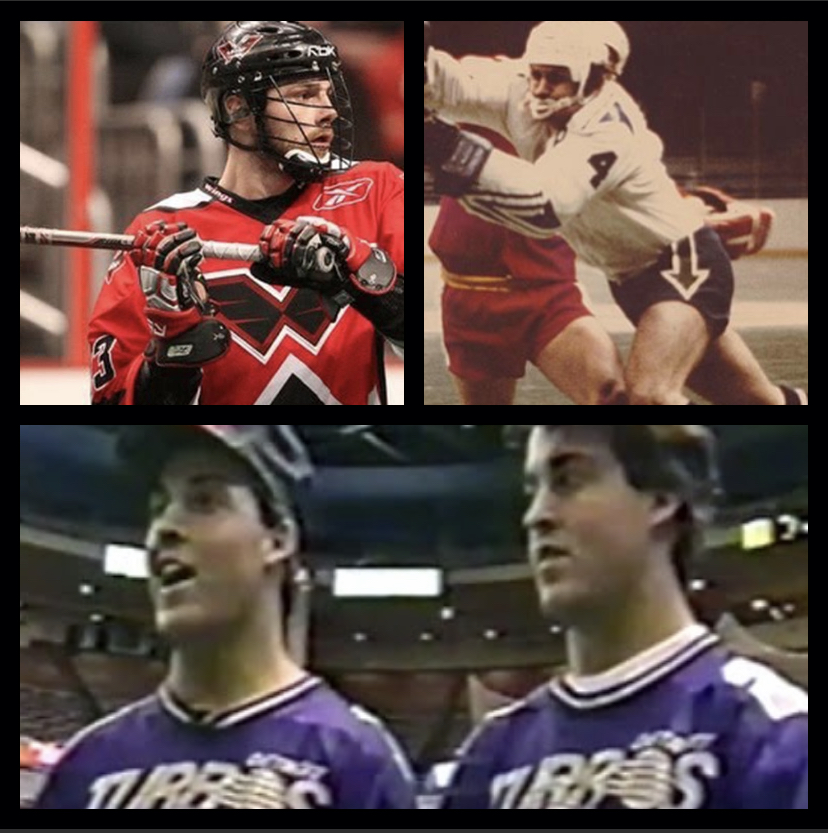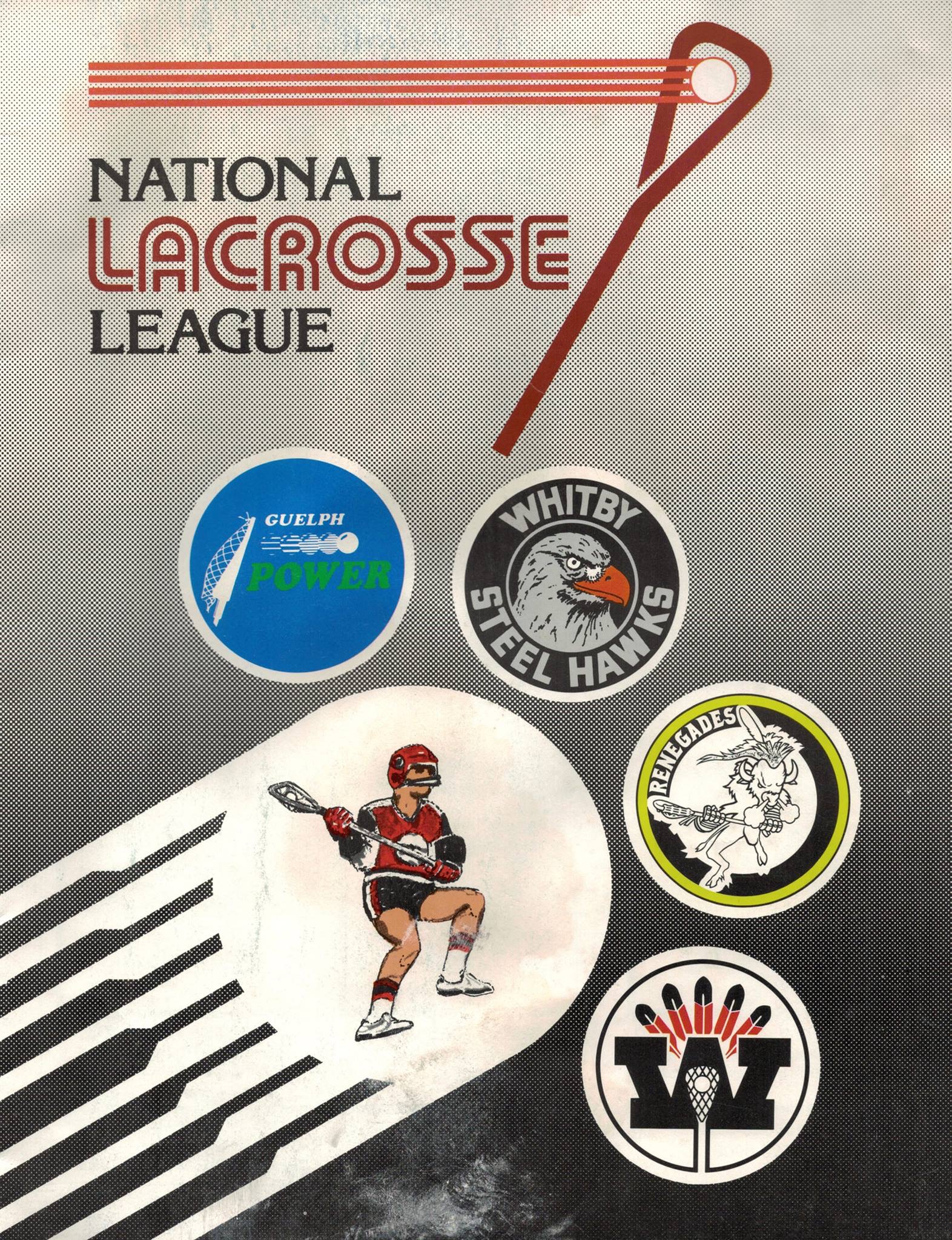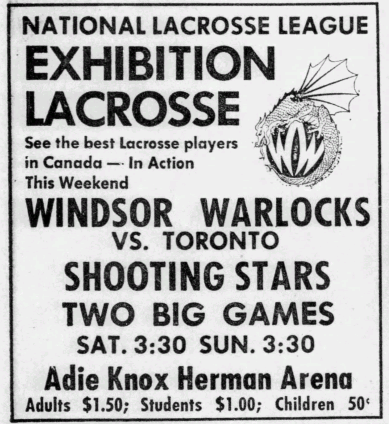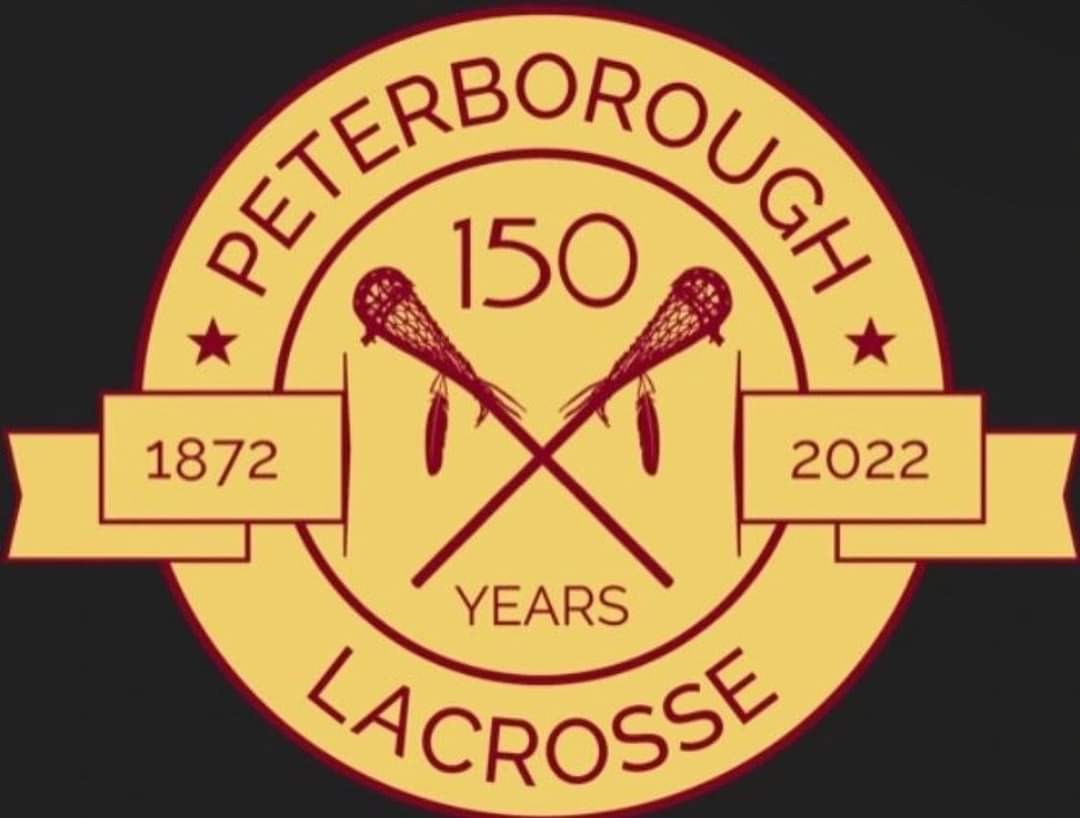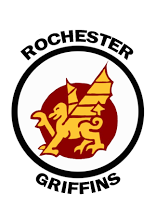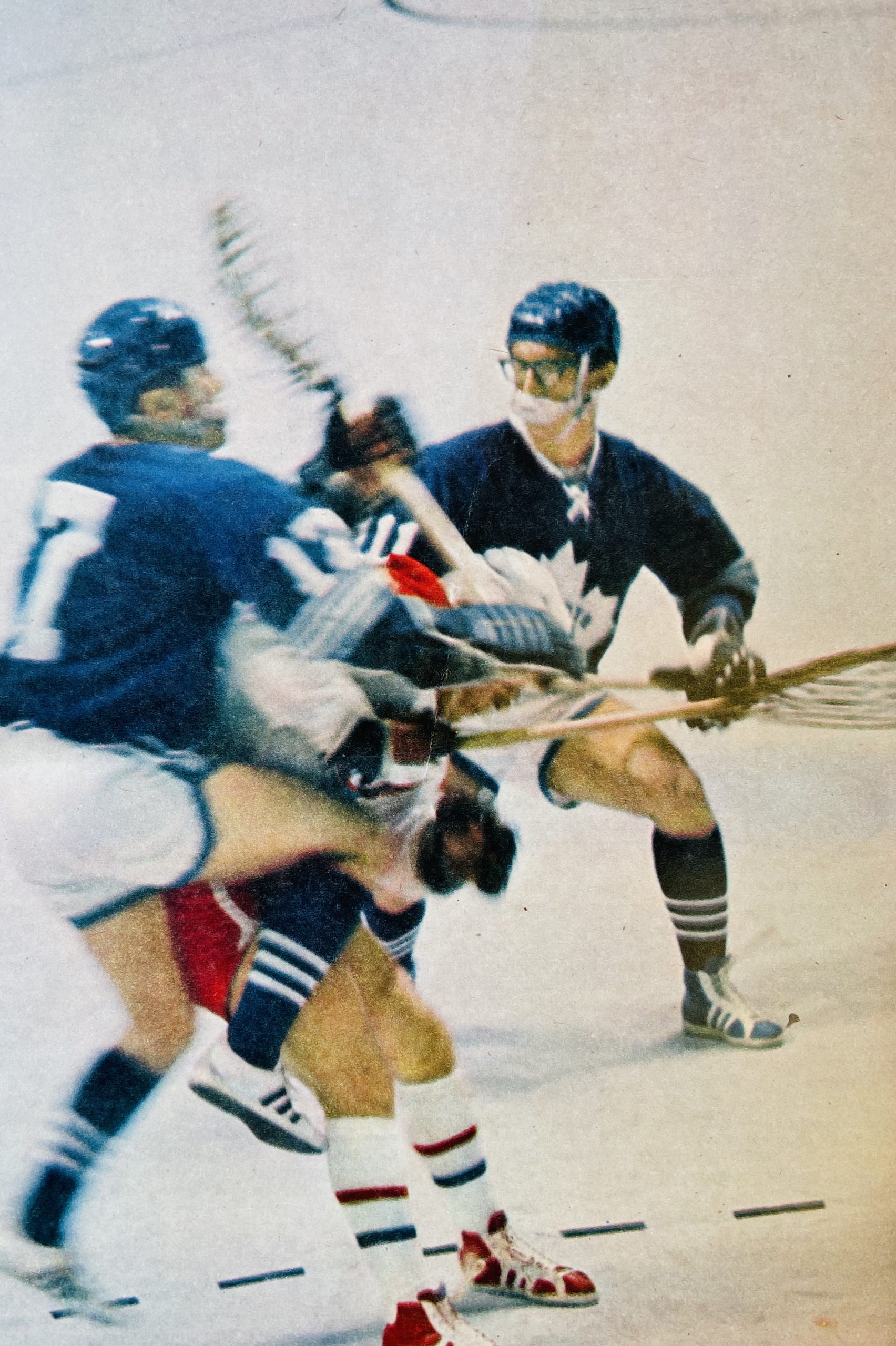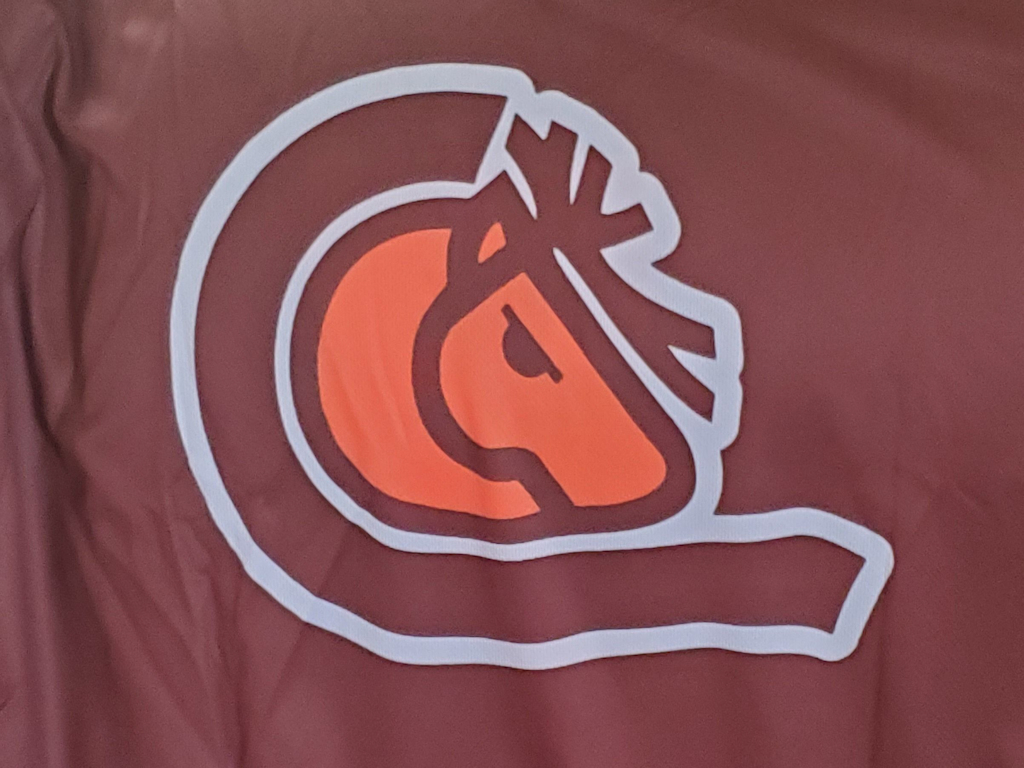by Steve Holroyd (laxmavn@aol.com)
Notwithstanding the general success of the “Nations In 1980”—the first attempt at an international box lacrosse tournament since some brief attempts by the Lally Cup in the 1930s—there was no real rush to repeat the tournament.
At least not until January of 1985, when the International Box Lacrosse Association announced that it was sponsoring the North American Cup, a 15-game tournament between Canada and the United States, to be played throughout North America.
Impressive…until one scratched the surface a little bit. For example, notwithstanding its grandiose title, the “International Box Lacrosse Association” did not exist until the Cup was announced on January 3, 1985. Indeed, it would not be legally incorporated until over a month later…and would be headquartered in the lacrosse hinterlands of Kansas City, Missouri.[1]
So what was really going on?
In truth, the IBLA and the North American Cup were the brainchildren of Ira Blumenthal, a former lacrosse player at the University of Maryland, and Chris Fritz, a professional promoter of rock concerts and the like. Joined by Dr. David Schoenstadt (owner of the Kansas City Comets of the Major Indoor Soccer League, which was at the apex of its popularity) and Bob Tarring (former University of Virginia midfielder), Blumenthal and Fritz were not interested in growing box lacrosse on an international level. Rather, the primary goal was to re-establish professional box lacrosse on the continent, which had not existed since the National Lacrosse League folded after two seasons in early 1976.
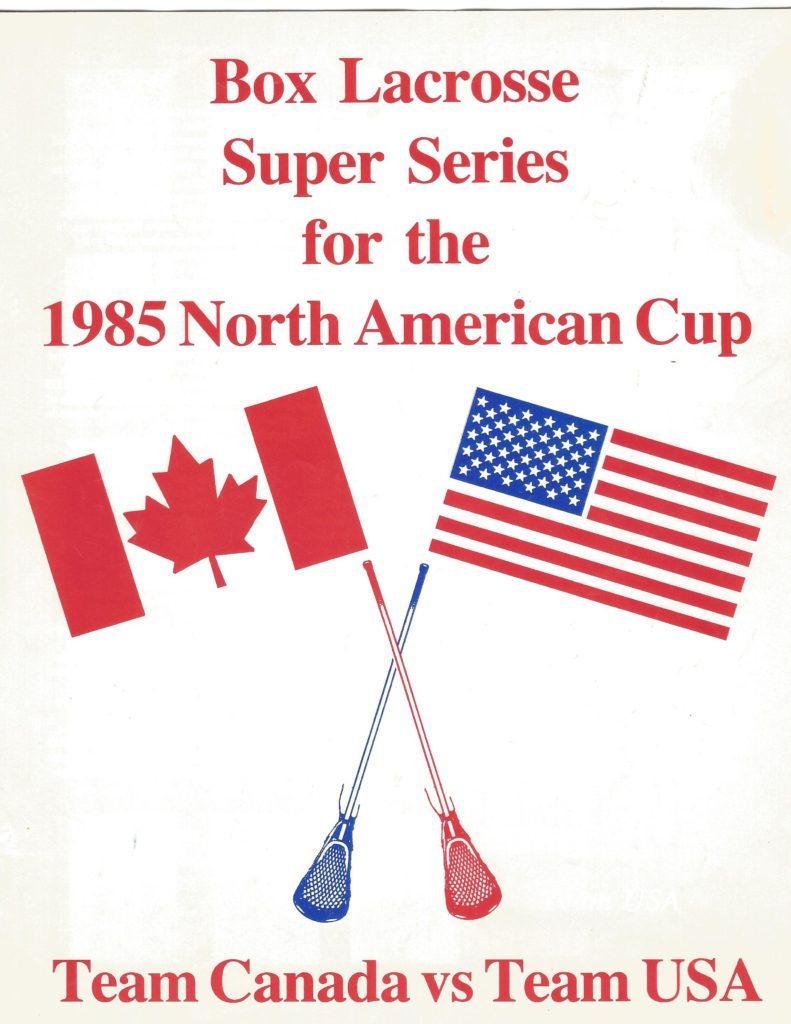
“There are thousands and thousands of lacrosse players with nowhere to go after college in [the United States],” said Blumenthal at the announcement. “We’ve made a study of why [the NLL] didn’t work 10 years ago. We think we’ve found the answers.”[2]
To that end, Blumenthal—who had been involved with the NLL’s Maryland Arrows and, as a result, was not a complete stranger to the box game—announced a three-year plan to reestablish pro box lacrosse in the United States:
- YEAR ONE: a 15-city tour would hit outdoor lacrosse hotbeds throughout the U.S. and Canada; if successful, the IBLA would take over as the sanctioning body of the box lacrosse “World Cup” competition scheduled to be held in Philadelphia in October 1985 and include teams from Australia, Great Britain, Canada, the U.S., and a side of Native North Americans;
- YEAR TWO: the tour would continue, but with two games played in each of the six most receptive cities, with three games played elsewhere;
- YEAR THREE: the tour would be further truncated, and ultimately replaced by a league with no less than six but no more than eight franchises, playing 12-to-16 game home-and-home season.
Of note was the planned structure of the new circuit. Rather than being composed of a loosely-affiliated group on independently owned franchises, the new league would own a major interest in each team, and would exercise total control over each team’s budget. In particular, the IBLA wanted to avoid bidding wars for players that would only drive up operating costs. Clearly, the men behind the venture had seen how such salary battles had doomed other start-up leagues like the World Hockey Association and World Team Tennis, and wanted to avoid the problem. In addition, the “single entity” approach would also allow the new box lacrosse league to avoid thorny anti-trust issues that tend to accompany such attempts to control wage growth.
But the league was two years away.
The North American Cup, on the other hand, was just on the horizon. The tour was set to commence on January 26, in Rochester, before proceeding to Philadelphia on February 2 and Syracuse one week later—all three being former NLL cities. The slate was also scheduled to include Montreal, Buffalo, Baltimore, Boston, Toronto, and Long Island, NY—again, all former NLL cities. Also set to be included were smaller cities like Norfolk, VA, Providence, RI and Troy, NY. The series was slated to end in Quebec City in March.
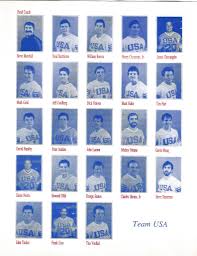
The U.S. and Canadian teams were loaded with talent. The United States was made up primarily of players who had represented the country in Los Angeles a year earlier, in a “World Games” held concurrent with the Summer Olympics, which found the side defeating England, Canada, Australia, and a team made up of Native Americans for the title. Team USA would be coached by Tarring, who had experience as an assistant with Towson State. “I’ve tried to integrate players from the World Games team with players who can play box lacrosse,” said Tarring—no mean feat, as the box game remained virtually unknown to most U.S. stickmen.[3] Featured on Team USA was Frank Urso—the only American on the team who had been drafted by the NLL. Also included were former collegiate All-Americans John Tucker, Dave Huntley, and Mark Gold.
Team Canada, of course, would have no difficulty in finding players familiar with the indoor game, as box lacrosse had been the country’s “national game” since its creation in 1931. Team Canada would include two NLL stars—former Philadelphia Wings stalwarts John Grant and Jimmy Wasson. “We’re keen to compete,” said Canada coach Bernie Burns. “I think people are going to be surprised by the most intense competition they’ve ever seen.”[4]

Given the fact that box lacrosse was Canada’s game, the Canadians were eager to see the sport succeed at both an international and professional level. Accordingly, the 33 players taking part for Team Canada made a real investment in the tournament. “All the Canadian players are paying $500 each for the privilege of being on the team and will get back only their travel and accommodation expenses,” explained John Tobias, Technical Director of the Canadian Lacrosse Association. “Their dedication has really proven my faith in the future of lacrosse.”[5]
In order to keep interest in a 15-game tournament high, the Cup would be awarded to the team with the most goals scored, not to the won who won the most games. “That way, if a team gets ahead 8-1 in games, the series is still going to be exciting because the other team could make up a large goal differential in just one game,” Blumenthal explained.[6]
The North American Cup—which Blumenthal soon took to calling the “Super Series of Lacrosse”—opened in Rochester on January 26. From the start, however, fans learned that there was a real difference between what they had seen in television advertisements—which featured the near-barbaric style of the NLL, as that was the only box lacrosse footage available for ad purposes—and what would be played in the Super Series. The fact that the NLL was “too brutal” was seen as one of its reasons for failure, according to the IBLA’s research, and so the current version of indoor lacrosse would practically outlaw cross-checking, as well as making checking away from the ball illegal. In addition, the goals would be moved out, allowing for more play from behind the nets. Finally, the games would be played on Astroturf instead of concrete. As it is, more than 7,000 fans came out to watch Team Canada win the opening game, 19-9. However, fans in the War Memorial Coliseum were not pleased with the product; expecting the brutal game that they had seen in the TV ads (and remembered from the Rochester Griffins, 1974 NLL champions), many booed the perceived lack of action, particularly the lack of hitting. A scheduled return engagement on April 6 was ultimately postponed for lack of interest.

One person who did not agree there was a lack of hitting was Burns. “We had a lot of bumps and bruises after the game. We didn’t expect that,” the Canada coach said. “What impressed us the most was that the American team brought body-checking into the game. The way they play the game up here [in Canada], body-checking is something you never see.”[7]
The second game, in Philadelphia on February 2, found a much different crowd. Team USA—now coached by Steve Marshall, as Bob Tarring decided to move to the broadcast booth as a color commentator for a hoped-for TV deal with the USA Network—rebounded with a 19-17 win before 13,789 fans in the Spectrum. Many fans no doubt came to watch former hometown heroes Grant and Wasson, who—while both 33 years old—still had plenty of game left in them. However, it was Mark Gold, with two goals (including the game winner) and three assists, who was the star of the night. Fan enthusiasm was such that the IBLA announced that the final game in the Super Series would be played in Philadelphia—notwithstanding prior announcements saying the series would end in Quebec City.
Even after two games, the clear differences in styles of play were fascinating to observe. The Americans—primarily field lacrosse players—favored a two-handed style of play, with lots of perimeter play. The Canadians, on the other hand, were primarily one-handed…but were much more aggressive as far as attacking the net, and favored one-on-one matchups.
Team Canada won the next game, 16-12, on February 9 before approximately 6,000 in Syracuse, NY. A more encouraging crowd of 8,612 turned out the next night in the Baltimore Civic Center, as Canada won yet again, 14-10, behind two goals from John Grant and the phenomenal goaltending of Shawn Quinlan. American Frank Urso—a four-time All-American with the University of Maryland—did not disappoint the hometown crowd, netting a goal and 3 assists.
Canada won the next game before 3,000 fans on February 17 in Norfolk, VA, but a February 24 game in Providence, RI was postponed for a break to allow the Canadian team to participate in an Australian tour. In reality, however, ticket sales were disappointing.
The sixth game of the series took place on March 1, in the Canadian lacrosse hotbed of Peterborough, ON. Canada again prevailed, 20-13, as Phil Scarfone—who won the 1985 Crighton Award, the Canadian equivalent of the Heisman Trophy, for his fine play at quarterback for McMaster University—scored 7 goals to go along with singles from Grant and Wasson. However, only 3,500 fans were in attendance. A seventh game before a sellout crowd of 4,100 in Troy, NY found the Canadians continuing their dominance.
What would wind up being the eighth and final game of the series took place in Philadelphia on April 13. Once again, Philadelphia fans did not disappoint, at 11,320 fans filled the Spectrum to watch former Wings star Grant score just 28 seconds into the game en route to a 17-12 Team Canada win. “It was great to be back,” said Grant, who finished with two goals and five assists, courtesy of his stick-handling wizardry. “I lived here for two years and got to know a lot of people. I was glad to play well in front of them.”[8]
The game entered the annals of box lacrosse history, however, as it nearly ended in a riot. Philadelphia fans lustily booed the Canadian team (save Grant and Wasson, still fondly remembered from their Wings days) and the Canadian anthem, and only grew more frustrated as the Canadians took control of the game. With 46 seconds remaining in the match, there was a melee between two players; fans decided to join in by littering the field with full cups of beer, with one drunken fan getting on the field to challenge the Canadians to a fight. “The fans, predominantly white males, late teens to early 30s, cheered on the unruly drunken spectators as the Spectrum security guards struggled to regain control,” wrote one Catherine Hackman of Villanova in a letter to the Philadelphia Inquirer.[9] Was this the birth of the “lax bro” stereotype?
The game in Philadelphia was not intended to be the last: a ninth game was set to be played in Montreal on April 21, but it was cancelled as only 700 tickets had been sold as of five days before the game.
Team Canada won the Super Series, 7 games to 1, with a significant goal advantage. 55,356 fans attended the eight games, a healthy average of 6,919 per game—just below the 7,000 per game average Blumenthal said he had hoped to see at the beginning of the tournament. However, this figure was clearly boosted by superior crowds in Philadelphia and Baltimore—crowds in such lacrosse hotbeds as Syracuse and Rochester had proven disappointing.
Nevertheless, Blumenthal and Fritz were thrilled by what they had seen. The “three year plan” was jettisoned, with plans for a professional league to commence in November 1986. “The original plan was to have Super Series the first two years and a pro league the third year, but things have progressed so positively we decided to go for broke,” gushed Blumenthal.[10] A meeting of 22 potential investors was held before the last game of the 1985 Super Series, with tentative plans set for an 8-to-10 team league, with a Maple Leaf Division and Eagle Division made up of Canadian and American teams, respectively, the winners of which would meet for the North American Cup. Based on attendance, Philadelphia and Baltimore were locks for U.S. cities, with Montreal, Quebec City, Hamilton, and Toronto considered front-runners for Canadian franchises.
Spoiler: as we know, a professional box lacrosse league did arrive, but a few months later than planned—January 1987. As there were no Canadian teams at the start, only the “Eagle Division” survived, giving us “Eagle League Pro Box Lacrosse,” with four teams. Also, Blumenthal exited the scene, to be replaced by Russ Cline. Of course, this league has evolved into the National Lacrosse League.
Also, even with
the dropping of the “three year plan,” the Box Lacrosse “World Cup” was also
still slated for the fall of 1985, in Philadelphia.
[1] https://bsd.sos.mo.gov/BusinessEntity/BusinessEntityDetail.aspx?page=beSearch&ID=894425 (retrieved October 30, 2018)
[2] McKee, Sandra, “Box lacrosse series could eventually produce a league,” Baltimore Evening Sun, January 8, 1985
[3] Brown, Doug, “U.S., Canadian box lacrosse teams finding renewed interest in the game,” Baltimore Evening Sun, February 7, 1985
[4] McKee, Sandra, “Box lacrosse tour plans all-star stop at Civic Center,” Baltimore Evening Sun, January 9, 1985
[5] Ottawa Citizen, January 10, 1985 (CP report)
[6] McKee, “Box lacrosse tour plans….”
[7] Biggs, Lorenzo, “Lacrosse grunts into Spectrum Saturday,” Philadelphia Daily News, January 31, 1985
[8] Camden Courier-Post, April 14, 1985
[9] Philadelphia Inquirer, April 23, 1985
[10] Mayoh, Rick, “Organizers put faith in pro lacrosse,” Ottawa Citizen, April 20, 1985
https://youtu.be/gLpl7wQ_yVEhttps://youtu.be/gLpl7wQ_yVE

